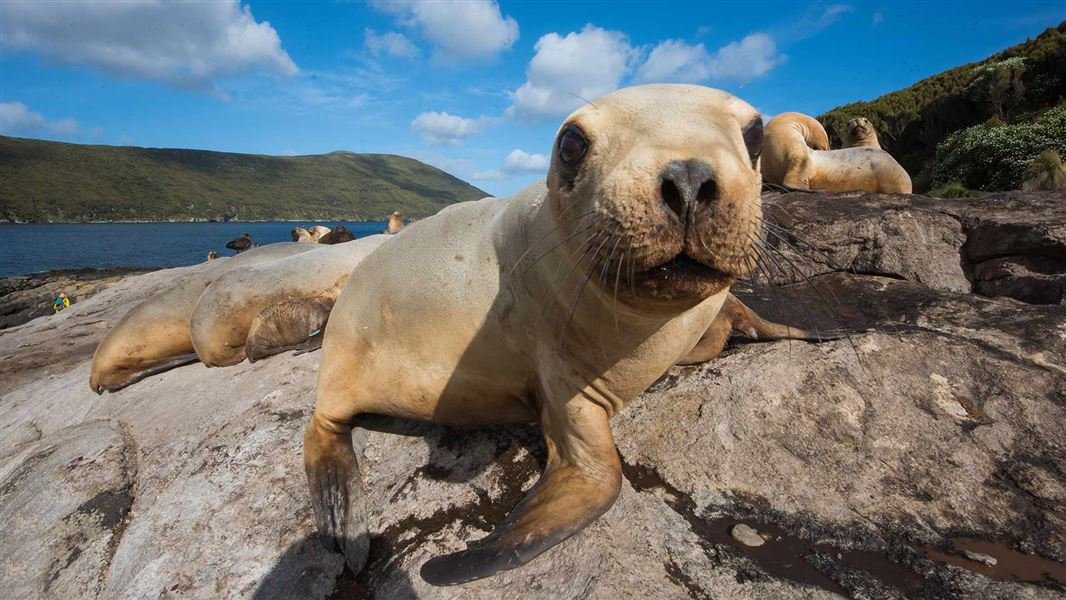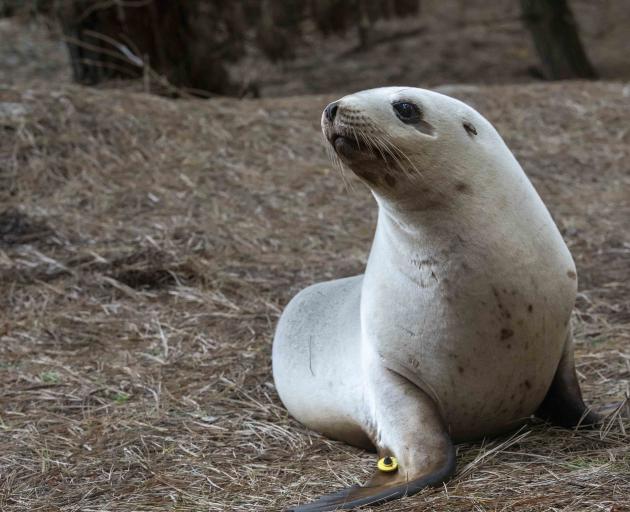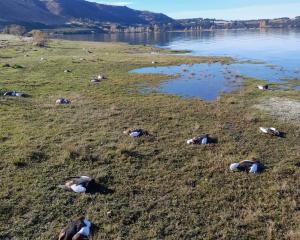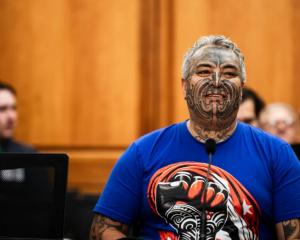
New rules have been set to help a native species of sea lion, but there is some contention over whether they are strict enough.
Fisheries New Zealand announced last week the new rules would include increased observer coverage on fishing vessels, change the limit of caught sea lions to 52 total and make the use of Sea Lion Exclusion Devices (Sleds) mandatory.
Commercial fishing in the Auckland Islands squid fishery (Squid 6T) is one of several threats to sea lions. Disease and habitat loss are also big contributors, as is pup mortality.
Fisheries New Zealand director of fisheries management Stuart Anderson said the sea lions’ conservation status was recently upgraded from Nationally Critical to Nationally Vulnerable, "to reflect signs of population recovery".
However, the Department of Conservation’s threat status for the species states, "endemic species, main breeding colony in decline".
Fishing vessels and sea lions occupying the same area contributes to that decline, as sea lions can become trapped in fishing nets and die.
Sleds can be used to allow sea lions to escape from fishing nets, and Mr Anderson said they were working.
The population decline rate at the Auckland Islands had slowed, while sea lion numbers were "stable or increasing at most other breeding locations".
The most recent estimate of the total number of sea lions was 11,800, he said.

New Zealand Sea Lion Trust chairwoman Jordana Whyte said the rules were not strict enough — over the last three years there was a near 300 pup decline in the Auckland Island population, which is where about 68% of pups are born.
"There’s a drop there, the numbers are going down. There’s no stability and there is no sign of recovery."
During the submission phase the trust proposed closing 17% of the fishing area around the island. It would have covered an overlap of squid fishing activity and breeding females which foraged for food, including squid.
Ms Whyte agreed observer coverage was good progress, but said there were "too many question marks" about the benefit of Sleds.
The International Union for Conservation of Nature and Natural Resource (IUCN) notes the same thing, saying on its website that "there is uncertainty about the efficacy of Sleds and the overall impact of fishery interactions on New Zealand sea lion populations".
It listed the species as endangered, with a decreasing population.
A population viability analysis was undertaken for the Auckland Island population of New Zealand sea lions, where three-quarters of the total species population are, which shows, "at the current rate of decline in the Auckland Island population, this population could be functionally extinct (less than 1000 animals within the population) by 2035".
Between 1998 and 2009 the number of sea lion pups born annually at the Auckland Islands halved.
In 2017, the Government produced a Threat Management Plan that aims to halt the decline of the New Zealand sea lion population within five years and ensure the population is stable or increasing within 20 years. The ultimate goal is to achieve "Not Threatened" status.
Doc science adviser Laura Boren said the implementation of the plan had helped inform and educate people; "the main thing we have to deal with is to tell people not to take selfies with them".
She said they were not concerned about population numbers at the Auckland Islands.
"They are not quite down to the scary point."
Mr Anderson said fishing was having less of an impact than in the 1990s.
"It is estimated that on average fewer than four sea lions were killed in this fishery each year [in recent years], which is estimated at less than a 1.5% impact on the population in the long term."
The annual maximum limit would be set to 52 sea lions — the amount at which the fishery would, in a "worst scenario", be automatically closed.
It is Fisheries New Zealand’s position that the southern squid trawl is a significant fishery and has good observer coverage.
It has a "a reasonable idea of how often sea lions end up in trawl nets. Sea lions also occasionally get caught in trawls for southern blue whiting and scampi".
A marine reserve around the Auckland Islands means no fishing is allowed within 12 nautical miles (22km). Meanwhile, the average total travel distance a lactating female sea lion may travel during foraging trips is 423km.
Mr Anderson said Fisheries New Zealand was working to help protect sea lions, including a tagging programme for Auckland Island sea lions to better understand changes in their distribution and where they forage, developing total population estimates, and mapping foraging activity for South Island colonies.
Minister of Fisheries Stuart Nash decided on the changes after public consultation and support and advice from the Squid 6T Technical Advisory Group.
It is illegal to not report the capture of a protected species, and is punishable by a fine not exceeding $100,000 under the Fisheries (Reporting) Regulations 2017.
It is also an offence under the Wildlife Act which is punishable by a fine not exceeding $10,000.
Mr Anderson said Fisheries New Zealand observers had been on board to verify reporting for more than 85% of trawl tows over the last five years, "giving us high confidence in the number of reported sea lion captures".
The new measures will be in effect as part of the Squid 6T Operational Plan over the next four years.












